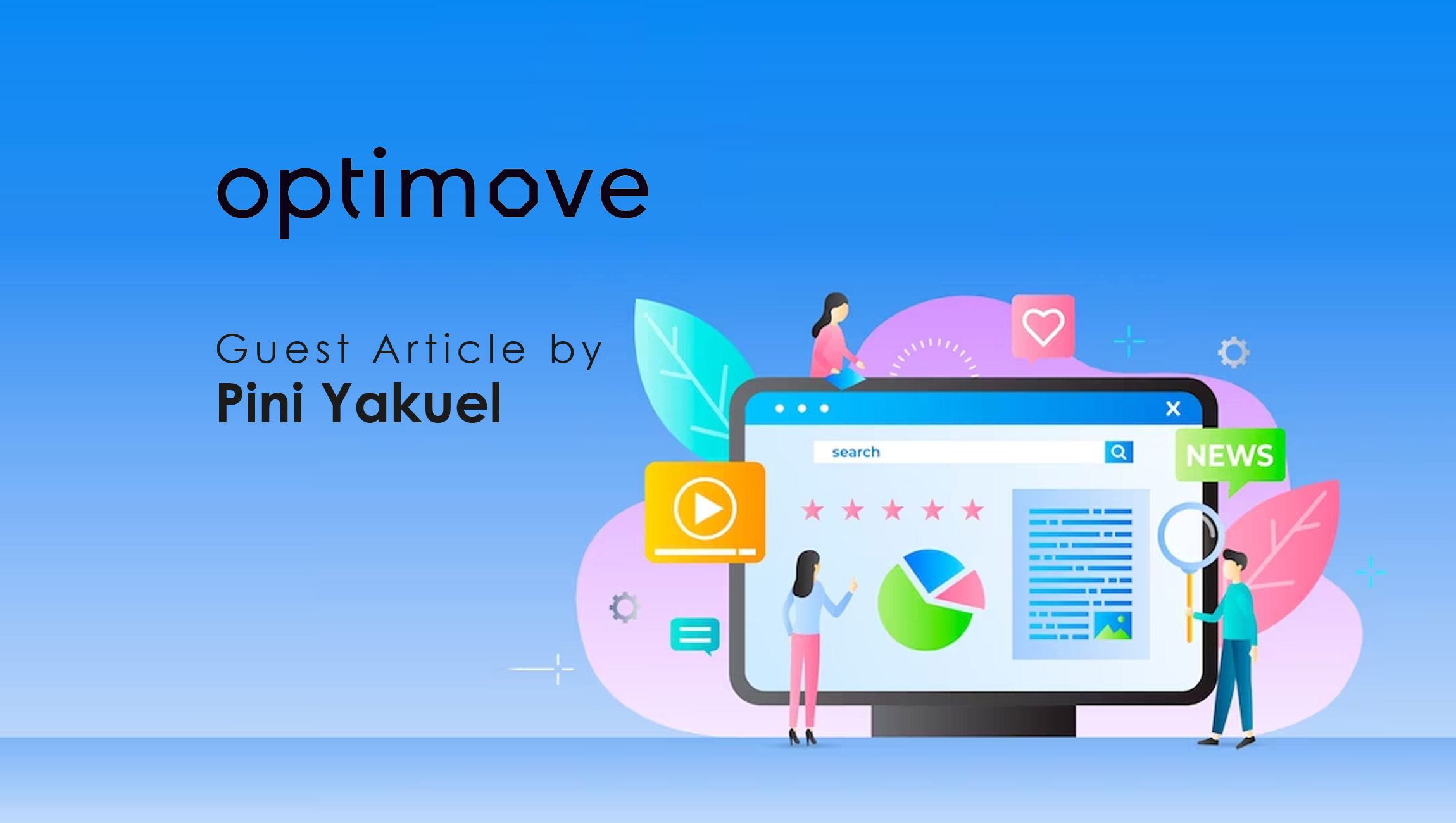A marketing strategy provides you direction, distinguishes you from competition, targets the proper audience, assures consistency, permits demonstrable results, and allows for adaptability. It is a fantastic instrument for attaining marketing success and boosting business growth! A marketing strategy helps you to set specific, measurable goals and track your progress. It allows you to implement metrics and analytics to measure the success of your marketing efforts, identify areas for improvement, and finally optimize your strategies for better results. It provides a structure that can be tweaked and enhanced over time to keep your marketing efforts up-to-date and effective.
In today’s highly competitive digital landscape, businesses are constantly seeking innovative ways to capture the attention of their target audience and drive meaningful engagement. Two prominent marketing approaches that often come into play are push and pull marketing. While push marketing involves proactively reaching out to potential customers, pull marketing aims to attract and captivate them organically.
So, if now you are planning your strategy for the next quarter and not sure which direction to go in then you can think of implementing push and pull marketing initiatives and balance them with content marketing for better results.
What is Push Marketing?
Advertising can be divided into two types: push and pull.Push advertising is concerned with pushing things to certain audiences, whereas pull advertising is concerned with reaching the right people at the appropriate moment.
Push marketing is a tactic used by managers to advertise products to consumers, with the goal of getting the products viewed by consumers at the point of purchase. Product exposure is critical here, and it is performed through a variety of methods such as social media platforms, traditional mail, and in-store displays. Along with this strategy in place, companies intend to build long term relationships with their customers simultaneously, push marketing is executed to acquire an immediate sale. Therefore, it is great for increasing the volume of sales and improving brand loyalty.
Push marketing can be utilized in both business-to-consumer (B2C) and professional services environments. In the B2B sector, for instance, manufacturers or wholesalers may employ push marketing strategies to persuade retail outlets to stock their products. This approach involves including samples during in-person marketing demonstrations to entice the retailers.
While push marketing may seem favorable in theory, marketing managers should exercise caution before adopting it as their sole approach. Relying solely on push marketing can lead to financial losses if customers disregard the company’s messages despite significant advertising expenditures. Since push marketing does not prioritize relationship-building, key drivers of sales, such as repeat business, do not directly result from this type of campaign. In essence, relying solely on push marketing may result in missed opportunities.
However, push marketing tends to be most effective when promoting goods and services that already have existing demand. It excels at creating immediate results and leaving a strong impression on potential customers. Push marketing eliminates the need for extensive branding efforts and can rapidly generate attention for a new product. While it can be expensive and its effects are often temporary, it can attract new customers effectively in the short term.
In summary, push marketing can be applied to both B2C and professional services spaces. While it can yield immediate results and make a significant impact, marketing managers should be cautious about relying solely on push marketing. It is best utilized for promoting products or services that are already in demand.
What is pull marketing?
Pull marketing is a tactic for increasing consumer demand for a certain product. It entails convincing customers to actively seek out a product, thereby encouraging shops to stock it. Pull marketing brands reach out to consumers through direct marketing initiatives, encouraging them to buy the goods through shops. This strategy enables companies to sell their goods while meeting consumer demand.
This method works best when there is enough time for consumers to compare options and make informed purchasing selections without feeling pressured. Through their pull marketing efforts, businesses must persuade consumers that their product is worth purchasing. The advantage for customers is that they can evaluate the worth of goods or services and make an informed purchase rather than settling for whatever is available anywhere else.
Pull marketing uses a variety of techniques to engage customers and generate passion about a product or brand. It can even build interest in a product before it is ready for purchase, lowering production costs by manufacturing units based on demand. Ideally, pull marketing causes demand to exceed supply.
It is critical to distinguish pull marketing from regular advertising campaigns. While both strategies involve market research data, pull marketing is more focused on generating fresh interest and begins with an analysis of the company’s goals and market potential. It is especially important for innovative products that target new or underserved consumers.
Pull marketing focuses on creating buzz and acquiring a big customer base. The goal is to maintain this excitement throughout the product’s life cycle, reaching shop sell-outs or exceeding user capacity whenever possible.
Balancing push and pull marketing initiatives with content marketing:
Both strategies have their distinct advantages, but what happens when we integrate them with the power of content marketing?
Let us explore the concept of integrating push and pull marketing initiatives within a content marketing strategy to strike the perfect balance. By effectively combining these approaches, businesses can enhance brand visibility, foster customer engagement, and ultimately drive conversions.
We will delve into the characteristics and benefits of push and pull marketing, as well as the principles and advantages of content marketing. We will then delve into practical strategies for integrating push and pull marketing within a content marketing framework, considering the buyer’s journey, creating valuable content, leveraging different channels, and measuring results.
By understanding the synergies between push and pull marketing and content marketing, businesses can create a comprehensive marketing ecosystem that maximizes their impact and resonates with their target audience. Let’s embark on this journey to discover how to strike the perfect balance and achieve marketing success in the digital realm.
Marketing Technology News: Martech Interview with Jim Kraus, President, Buyer Persona Institute (BPI)
Push Marketing
Push marketing refers to the promotional activities that proactively push messages or advertisements to potential customers, often interrupting their current activities to generate awareness and interest.
Examples of push marketing include television and radio commercials, display ads, direct mail, cold calling, and pop-up advertisements on websites. These tactics aim to reach a wide audience and capture attention by delivering messages directly to consumers, even if they may not be actively seeking or interested in the product or service being promoted.
Characteristics and benefits
Push marketing is characterized by its proactive nature, where businesses initiate contact with potential customers. It relies on interruption-based strategies to capture attention and create brand awareness. The benefits of push marketing include:
- Wide reach: Push marketing allows businesses to reach a large audience quickly through various channels, increasing the visibility of their products or services.
- Control over messaging: Businesses have direct control over the content and timing of their marketing messages, ensuring consistency and relevance.
- Immediate impact: Push marketing can generate immediate responses, making it suitable for time-sensitive promotions and sales.
Common push marketing channels
Push marketing tactics are implemented through various channels to reach the target audience effectively. Common push marketing channels include:
- Email marketing: Sending promotional emails or newsletters directly to a list of subscribers or potential customers.
- Advertising: Utilizing traditional media such as television, radio, newspapers, and magazines to deliver marketing messages.
- Telemarketing: Making outbound phone calls to potential customers to promote products or services.
- Direct mail: Sending physical mail, brochures, or catalogs directly to targeted individuals or businesses.
- Pop-up ads: Displaying advertisements that appear abruptly on websites, often overlapping the content being viewed.
By leveraging these channels, businesses can effectively push their marketing messages to a wide audience, generating awareness and driving conversions.
Pull Marketing:
Pull marketing, also known as inbound marketing, refers to marketing strategies and tactics aimed at attracting and engaging potential customers organically. It involves creating valuable and relevant content that pulls customers towards a brand rather than aggressively pushing promotional messages.
Examples of pull marketing include search engine optimization (SEO), content marketing, social media marketing, influencer marketing, and referral marketing. Through these approaches, businesses aim to establish their authority, generate brand awareness, and foster long-term customer relationships.
Characteristics and Benefits
Pull marketing is characterized by its customer-centric approach, where the focus is on creating compelling content that resonates with the target audience. Some key characteristics of pull marketing include:
- Value-driven content: Providing informative, educational, and entertaining content that meets the audience’s needs.
- Two-way communication: Encouraging interaction and engagement through comments, shares, and discussions.
- Relationship-building: Nurturing long-term relationships and customer loyalty by consistently delivering value.
- Organic audience growth: Attracting interested prospects naturally, leading to higher quality leads and conversions.
- Higher credibility and trust: By providing valuable content, businesses can establish themselves as experts in their field, building trust with their audience.
- Cost-effectiveness: Pull marketing strategies, such as content creation and SEO, often yield long-term results and require lower ongoing investments compared to traditional advertising.
- Targeted reach: Pull marketing channels allow businesses to target specific audiences based on their interests, demographics, and behavior.
- Sustainable growth: By consistently delivering value, businesses can attract and retain loyal customers, leading to sustainable business growth over time.
Common Pull Marketing Channels
- Search Engine Optimization (SEO): Optimizing website content, keywords, and meta tags to rank higher in search engine results and attract organic traffic.
- Social Media Marketing: Leveraging social media platforms (e.g., Facebook, Instagram, Twitter, LinkedIn) to create engaging content, interact with the audience, and build brand awareness.
- Content Marketing: Creating and distributing valuable and relevant content through various formats such as blog posts, videos, infographics, and ebooks.
- Influencer Marketing: Collaborating with influential individuals in a specific industry or niche to leverage their audience and credibility.
- Referral Marketing: Encouraging satisfied customers to refer their friends and acquaintances to the business, often through referral programs or incentives.
These pull marketing channels enable businesses to attract and engage their target audience organically, creating a strong foundation for long-term success.
Integrating Push and Pull Marketing with Content Marketing
To maximize the impact of your marketing efforts, it is crucial to integrate push and pull marketing initiatives with content marketing. This integration allows businesses to create a cohesive and powerful marketing ecosystem that attracts, engages, and converts their target audience. Here are key strategies for effectively integrating push and pull marketing with content marketing:
1. Define your goals and target audience:
Before integrating push and pull tactics, it is essential to identify your marketing objectives and understand your target audience’s preferences and behaviors. This knowledge will guide your content creation and help tailor your push and pull strategies accordingly.
2. Align push and pull marketing with the buyer’s journey:
The buyer’s journey consists of three stages: awareness, consideration, and decision. Each stage requires a different approach. Push marketing tactics, such as targeted ads and email campaigns, can generate initial awareness, while pull strategies like search engine optimization (SEO) and social media engagement are effective in nurturing leads and driving conversions.
3. Create valuable and engaging content:
Content is at the heart of content marketing. Conduct thorough keyword research to understand search intent and identify relevant topics for your audience. Develop a content calendar that balances informational, educational, and promotional content. Craft compelling and shareable content formats, such as blog posts, videos, infographics, and podcasts. Optimize your content for search engines and social media platforms to increase visibility and engagement.
4. Leverage push and pull tactics simultaneously:
Integrate push marketing tactics to amplify the reach of your content. This can include paid promotion, influencer collaborations, or email newsletters. Simultaneously, utilize pull marketing strategies to attract and retain audience engagement. Engage with your audience on social media, encourage user-generated content, and run social media contests to foster community participation.
5. Measure and analyze results:
Tracking key performance indicators (KPIs) is essential to evaluate the effectiveness of your push and pull marketing initiatives. Use analytics tools to gain insights into audience behavior, preferences, and content performance. By analyzing the data, you can make data-driven adjustments to optimize future campaigns and improve your overall marketing strategy.
By integrating push and pull marketing with content marketing, businesses can create a comprehensive and balanced approach that reaches the target audience at various stages of their buyer’s journey. This integration ensures that businesses proactively engage their audience while also attracting organic traffic and building long-term relationships. Remember to continuously monitor and adapt your strategies based on data and feedback to refine your marketing efforts and drive optimal results.
Leveraging push and pull tactics simultaneously:
To achieve a comprehensive and effective marketing strategy, businesses can leverage push and pull tactics simultaneously. By combining the strengths of both approaches, businesses can amplify their reach, engage their target audience, and drive conversions. Here are key considerations for integrating push and pull tactics simultaneously:
- Amplify content reach
- Utilize pull tactics for audience engagement
- Integration in content promotion
- Personalization and targeting
By leveraging push and pull tactics simultaneously, businesses can create a multi-faceted marketing strategy that maximizes reach, engages the audience, and drives conversions. It is crucial to strike a balance between the two approaches and ensure that they complement each other in achieving your marketing goals. Continuously monitor and analyze the results of your campaigns to optimize your strategies and refine your marketing approach.
Key differences to keep in mind between push and pull marketing:
The following are the fundamental distinctions between push and pull marketing:
Demand:
Push marketing works best for things that consumers are already familiar with or are interested in. Pull marketing, on the other hand, works well for creating demand for things that are new or unfamiliar to consumers.
Time:
Push marketing is focused on obtaining short-term sales results, whereas pull marketing takes a longer time to cultivate and build an audience.
Product type:
Pull marketing is frequently used for unusual or distinctive items that may necessitate teaching the audience about their qualities and benefits. Push marketing, on the other hand, targets things that the consumer is already familiar with and may not necessitate significant comparative shopping.
Goal:
Push marketing seeks to promote quick sales by urging consumers to take immediate action. Pull marketing, on the other hand, focuses on progressively and from scratch cultivating an audience over time.
Cost:
The cost of both push and pull marketing initiatives varies based on the techniques and channels employed to reach the target demographic. It ultimately relies on the product and the intended audience.
To summarize, the distinctions between push and pull marketing originate from the brand’s relationship with its target audience and the sales goals it seeks to achieve. Push marketing attempts to generate or expand demand, whereas pull marketing seeks to create or expand demand. The product, target audience, and targeted outcomes of the marketing campaign depends upon which technique is being used.
Marketing Technology News: The Tools of Scale: Driving DTC Growth with AI
Final Words:
Achieving a harmonious blend of push and pull marketing initiatives within your content marketing strategy is crucial for driving success in the digital landscape. By understanding the distinct characteristics and benefits of both approaches and aligning them with your business goals and target audience, you can create a powerful marketing ecosystem.
Remember to create valuable and engaging content that caters to your audience’s needs and preferences, while leveraging push and pull tactics simultaneously to enhance your reach and engagement. Continuously measure and analyze your results to make data-driven adjustments and optimize future campaigns. By finding the perfect balance between push and pull marketing, you can amplify your content marketing efforts and achieve long-term success in captivating and converting your target audience.











